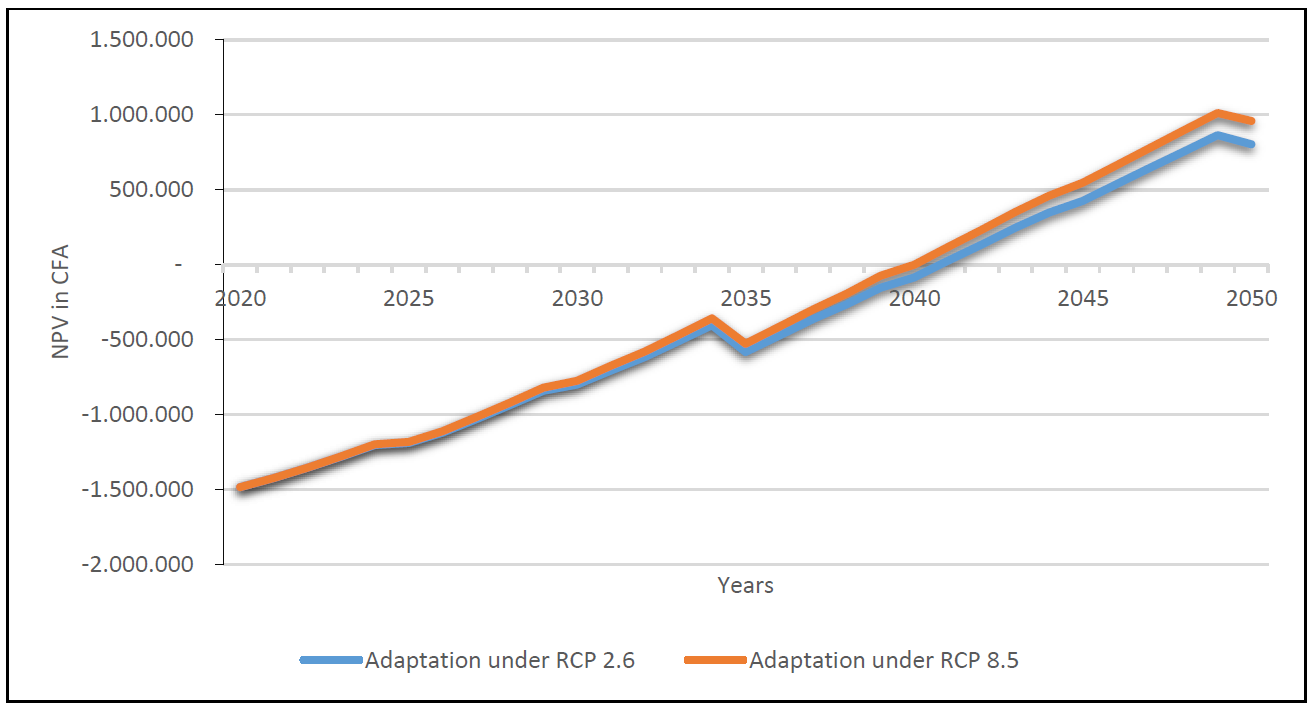Burkina Faso: Irrigation
The agricultural sector in Burkina Faso is heavily dependent on water from precipitation. Since precipitation is increasingly erratic, irrigation can help farmers to adapt to these changing conditions. Irrigation can be defined as the artificial process of applying water to crops or land in order to support plant growth. The FAO distinguishes between three types of irrigation: (1) surface irrigation, where water flows over the land; (2) sprinkler irrigation, where water is sprayed under pressure over the land; and (3) drip irrigation, where water is directly brought to the plant (FAO, 2001).
Irrigation is a promising adaptation strategy in Burkina Faso. Irrigation can help smallholder farmers to compensate for the negative impacts of erratic and insufficient precipitation and significantly stabilise agricultural production. The results of the cost-benefit analysis show that under both emissions scenarios switching from rainfed to irrigated production of maize has a positive return on investment (see Figure 1). However, water retention, which is essential for the used irrigation systems in Burkina Faso, is dependent on seasonal variation and specific location which influence the accessibility and effect of irrigation. Besides, irrigation requires a significant investment and only becomes profitable after some years, depending on the type of irrigation system and the farm location. Continuous institutional support is usually required and care has to be taken to avoid potential maladaptive outcomes from irrigation. Water use for irrigation has to be carefully managed to prevent groundwater table decrease and associated consequences.
Specific recommendations regarding irrigation in Burkina Faso are:
- Low-cost irrigation options with low maintenance requirements can be promoted across Burkina Faso, where water resources are available.
- Awareness raising about water-saving irrigation management is crucial to ensure a long-term responsible use of natural resources.
- Ideally, water saving equipment, such as drip irrigation and smart irrigation systems, are promoted and supported by extension services to encourage farmers to use sustainable and environmentally responsible techniques.
- Provision of support services is needed to ensure the ability of farmers to further operate the technology and take care of their maintenance.
- For upscaling irrigation, all user interests in water and energy should be carefully considered. Dispute settlement mechanisms can be implemented to address potential conflicts between upstream and downstream users.
- Developing financing mechanism, such as access to loans or credits, can support the accessibility for irrigation equipment.

References
- FAO. (2001). Irrigation Manual: Planning, Development, Monitoring and Evaluation of Irrigated Agriculture with Farmer Participation. FAO.


